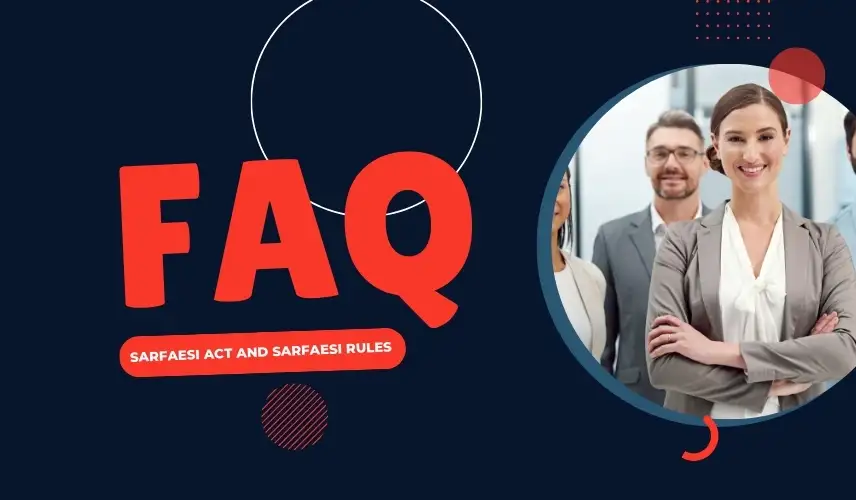
FAQ About Demand Notice Under Section 13(2) of Sarfaesi Act, 2002
Answer: The secured creditor must consider the representation or objection of the borrower against the notice under Section 13(2) of Sarfaesi Act , 2002 and if the Secured Creditor finds that the representation or objection is not acceptable or tenable, he shall communicate within 15 days
(7 days before 15.01.2013) the reasons for non – acceptance of the representation or objection to the borrower. The Supreme Court in the case of Mardia Chemicals Limited –Versus- Union of India, reported in (2004)4 Supreme Court Cases page 311, has held that there should be some meaningful consideration of the objection raised rather than to ritually reject them and proceed to take drastic measure under Sub Section 4 of Section 13 of the Sarfaesi Act , 2002.
Answer: If the borrower does not make payment within 60 days after receiving notice under Section 13(2) of Sarfaesi Act, 2002, the Secured Creditor can take one or more of the measures mentioned in Section 13(4) of the Sarfaesi Act, 2002, as mentioned below :-
Take possession of the Secured Asset :
Transfer the Secured Assets by way of lease, assignment or sale :
Take over the management of the Business of the Borrower:
Transfer the business of the borrower by way of lease, assignment or sale
Appoint any person to manage the Secured Assets, the possession of which has been taken over by the Secured Creditor :
Require any person who has to make some payment to the Borrower , to make such payment to the Secured Creditor :
Categories
Related FAQs
-

FAQ About Essential Pre- Conditios for Taking Sarfaesi Action
Know more about frequently asked questions [...]
-

FAQ About Demand Notice Under Section 13(2) of Sarfaesi Act, 2002
Know more about frequently asked questions [...]
-

FAQ About Borrower’s Representation/ Objection Against Section 13(2) Notice
Know more about frequently asked questions [...]
-

FAQ About Non-performing Assets
Know more about frequently asked questions [...]
-

FAQ About Assignment of Loan Account to Asset Reconstruction Company
Know more about frequently asked questions [...]
-

FAQ About Possession of Immovable Property
Know more about frequently asked questions [...]
-

FAQ About Sale of Immovable Property Under Sarfaesi Act, 2002
Know more about frequently asked questions [...]
-

FAQ About Redemption
Know more about frequently asked questions [...]
-

FAQ About Possession and Sale of Movable Properties
Know more about frequently asked questions [...]
-

FAQ About Application to Debts Recovery Tribunal Under Section 17 of the Sarfaesi Act, 2002
Know more about frequently asked questions [...]
-

FAQ About Appeals to Debts Recovery Appellate Tribunal Including About Pre-deposit
Know more about frequently asked questions [...]
-

FAQ About Taking Possession With the Help of District Magistrate/Chief Metropolitan Magistrate Under Section 14 of the Sarfaesi Act, 2002
Know more about frequently asked questions [...]
-

FAQ About Eviction of Tenants Under Sarfaesi Act, 2002
Know more about frequently asked questions [...]
-

FAQ About Powers of Debts Recovery Tribunal
Know more about frequently asked questions [...]
-

FAQ About Powers of Debts Recovery Appellate Tribunal
Know more about frequently asked questions [...]
-

FAQ About Registration of Security Interest, That is Mortgage/hypothecation
Know more about frequently asked questions [...]
-

FAQ About Assets for Which Sarfaesi Action Can Not Be Taken Including Agricultural Land
Know more about frequently asked questions [...]
-

FAQ About Taking Over of Management
Know more about frequently asked questions [...]
-

FAQ About Misc. Provisions of Sarfaesi Act, 2002
Know more about frequently asked questions [...]
